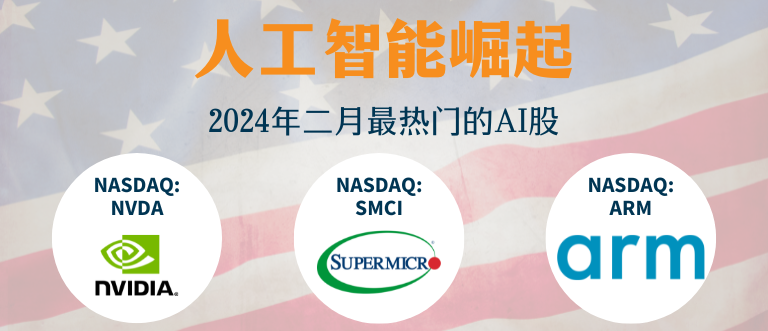Mark-to-market
Table of Contents
Mark-to-market
When assessing a company’s financial health, knowing how much its assets are worth right now is essential. To determine a company’s value, mark-to-market (MTM) accounting takes into consideration the assets’ current fair market value. If you’re an accountant, knowing this method of accounting will help you evaluate a business’s financial health and make smart financial decisions. Here we’ll define mark-to-market accounting, walk you through its steps, and highlight some of its advantages.
What is mark-to-market?
The term “mark to market” refers to a process for determining the fair value of accounts susceptible to periodic changes, such as assets and liabilities. The purpose is to assess a company’s or institution’s financial health regularly. All the while, the current state of the market is considered. The financial markets may also make use of the mark-to-market approach to display the present and fair market value of investments like mutual funds and futures.
The worth of an organisation’s assets can be more accurately portrayed using mark-to-market accounting rather than historical cost accounting. The reason behind this is that the first approach requires the assets’ value to remain at the cost of acquisition. But under the second approach, the asset’s worth is determined by how much it can be traded for in the current market. On the other hand, when market volatility is strong, the mark-to-market technique does not always give the most accurate picture of an asset’s real worth.
Understanding mark-to-market
The method of valuing an asset by comparing it to its current market value is called mark-to-market accounting, fair value accounting, or MTM accounting. The present value of an asset is estimated using this method. What a company or business gets for its assets in exchange for them is a genuine depiction of the asset’s current worth, which is based on current market circumstances. With MTM accounting, most companies report their asset values as the fiscal year ends.
To help government agencies regulate business, it is one of the GAAP or Generally Accepted Accounting Principles. You may use this to better understand what we mean when we talk about fair value and how it factors into our calculations of an organisation’s total asset worth. Organisations can then provide accurate financial data to the government.
Importance of mark-to-market
Mark-to-market accounting is essential to give market players and investors a clear picture of a company’s financial health.
- Investors benefit from MTM because it provides a more precise picture of a company’s current financial health. In contrast, a company’s financial situation may be misrepresented using the historical cost technique.
- In terms of financial condition and risk management, MTM is useful for businesses. On top of that, MTM is mandated by several accounting standards, including GAAP and FASB regulations.
- Every day, MTM is a must-have for derivative traders. In this way, traders may see how much their positions are worth right now, check if they have enough margin, and plan for any future cash flows they might have to pay out or receive.
Investors, firm management teams, and traders all rely on MTM accounting to help them make educated choices in real-time, making it an essential component of the financial markets.
Working of mark to market
Adjusting the value of assets according to what the market is now willing to bear is how mark-to-market accounting gets things done. The basic premise is to compute an item’s potential instantaneous market value, whether it is machinery or an investment.
Mark-to-market accounting might indicate how much capital a firm could earn if it chose to sell off some assets due to a financial constraint. The primary goal would be a correct valuation of the company’s marketable assets.
Market performance and volatility are the two main factors used to calculate a security’s mark to market value in the stock trading industry. In this case, you’ll keep an eye on the security’s price throughout the trading day and adjust its value accordingly.
Beyond determining the worth of a company’s assets or securities, mark-to-market has further applications. One industry that uses the mark-to-market approach is insurance, where the replacement value of individual possessions is determined. A straightforward application of mark-to-market accounting is the computation of net worth, a crucial personal finance ratio.
Example of mark-to-market
Consider an example where a farmer shortens ten contracts on rice futures. The goal is to protect one’s wealth against the present market trend of dropping commodity prices.
There are 100 bushels of rice per deal. So, the farmer is protecting his investment in 1,000 rice bushels from a possible price drop. Every contract costs $10. Because of this, the farmer’s account would be $10,000 ($10 x 1,000 bushels of rice).
When the value of the contract for rice futures contracts falls, the farmer’s account balance increases since he is short the contract. Similarly, his account balance will fall as a consequence of a rise in the value of the future.
As an illustration, the futures value rose $0.5 ($10.5 – $10) on day 2. That meant a $500 loss for the day ($0.5 x 1,000). The amount then reduces the farmer’s account balance.
However, the trader on the opposite side of the transaction will have the identical amount added to their account. The trader’s long position in the same futures is the reason behind it.
Conclusion
The present market situation must be included in the periodic appraisal of some assets and liabilities whose values change over time. That encompasses futures contracts and specific accounts on a company’s financial sheet. Mark-to-market is an alternative to historical cost accounting that displays how much an item would fetch if sold today. It keeps an asset’s value at its original acquisition cost.
It is helpful in many ways to have an accurate and current estimate of the value of assets. Having said that, it’s not always perfect. Take this as an example. Market-based evaluations might not be reflective of the real worth of an item when the economy is in a state of flux.
Frequently Asked Questions
It refers to a realistic evaluation of the market’s financial status based on available assets and liabilities. In other cases, it is an accounting instrument that determines the worth of an asset relative to its current market price.
MTM accounting is vital and frequently used, although it has several potential downsides. For example, MTM might cause volatility by requiring corporations to record unrealised losses even if they do not intend to sell them.
Every trading day, the assets held by a mutual fund are marked to market. This means that if you invest in a mutual fund, you are also investing in that process. When you buy shares in a mutual fund or sell them for a profit, you’ll be paying or receiving the fund’s net asset value.
When financial instruments are evaluated at their current market value, mark-to-market losses might occur. A holding would incur an unrealised loss and a mark-to-market loss if they bought an asset at one price and then the market price dropped; the holder would mark the asset down to the new market price.
Mark-to-market losses are losses that are created through an accounting entry instead of when a security is sold. In a mark-to-market loss, the value of the financial instruments owned is reduced to their current market value from their acquisition price.
Related Terms
- Federal Open Market Committee
- FIRE
- Applicable federal rate
- Assets under management
- Automated teller machine
- Central limit theorem
- Balanced scorecard
- Analysis of variance
- Annual percentage rate
- Double Taxation Agreement
- Floating Rate Notes
- Average True Range (ATR)
- Constant maturity treasury
- Employee stock option
- Hysteresis
- Federal Open Market Committee
- FIRE
- Applicable federal rate
- Assets under management
- Automated teller machine
- Central limit theorem
- Balanced scorecard
- Analysis of variance
- Annual percentage rate
- Double Taxation Agreement
- Floating Rate Notes
- Average True Range (ATR)
- Constant maturity treasury
- Employee stock option
- Hysteresis
- RevPAR
- REITS
- General and administrative expenses
- OPEX
- ARPU
- WACC
- DCF
- NPL
- Capital expenditure (Capex)
- Balance of trade (BOT)
- Retail price index (RPI)
- Unit investment trust (UIT)
- SPAC
- GAAP
- GDPR
- GATT
- Irrevocable Trust
- Line of credit
- Coefficient of Variation (CV)
- Creative Destruction (CD)
- Letter of credits (LC)
- Statement of additional information
- Year to date
- Certificate of deposit
- Price-to-earnings (P/E) ratio
- Individual retirement account (IRA)
- Quantitative easing
- Yield to maturity
- Rights of accumulation (ROA)
- Letter of Intent
- Return on Invested Capital (ROIC)
- Return on Equity (ROE)
- Return on Assets (ROA)
Most Popular Terms
Other Terms
- Options expiry
- Adjusted distributed income
- International securities exchanges
- Settlement currency
- Federal funds rate
- Active Tranche
- Convertible Securities
- Synthetic ETF
- Physical ETF
- Initial Public Offering
- Buyback
- Secondary Sharing
- Bookrunner
- Notional amount
- Negative convexity
- Jumbo pools
- Inverse floater
- Forward Swap
- Underwriting risk
- Reinvestment risk
- Final Maturity Date
- Payment Date
- Secondary Market
- Margin Requirement
- Pledged Asset
- Yield Pickup
- Subordinated Debt
- Trailing Stops
- Treasury Stock Method
- Stochastic Oscillator
- Bullet Bonds
- Basket Trade
- Contrarian Strategy
- Exchange Control
- Notional Value
- Relevant Cost
- Dow Theory
- Speculation
- Stub
- Trading Volume
- Going Long
- Pink sheet stocks
- Rand cost averaging
- Sustainable investment
- Stop-limit sell order
- Economic Bubble
- Ask Price
- Constant prepayment rate
- Covenants
- Stock symbol
Know More about
Tools/Educational Resources
Markets Offered by POEMS
Read the Latest Market Journal

本文旨在为中级外汇交易者提供必要的信息和知识。它将涵盖我们上一篇文章 “五分钟看懂世界上最活跃的市场-外汇差价合约(FX CFD)...

解锁台湾股市的投资潜力!深入了解由强大的技术驱动型经济推动的股票市场,2023 年机械和电气设备将占出口的 69%。在政治稳定、投资者友好的法规和健全的法律框架下,探索台积电和富士康等全球顶级企业。台湾股市值得称赞的历史表现和在国际贸易中的的重要性使其更具吸引力。在这个科技实力雄厚、经济稳定、充满活力的股票市场中,抓住增长机遇!

了解外汇市场 外汇交易市场又称外汇市场,是一个买卖货币的全球性金融市场。它是全世界规模最大、流动性最强的金融市场,每日交易量超过 6 万亿美元。但外汇市场有一个重要却常被忽视的一点,就是它受交易心理的影响。在本文中,我们将探讨外汇市场的复杂性,还有把重点放在交易心理与传统交易策略共同发挥的关键作用...

五分钟看懂世界上最活跃的市场 -外汇差价合约(FX CFD)
外汇交易市场俗称外汇或外汇市场,是全球金融市场的支柱。它是世界上最活跃的市场,2022 年 4 月,全球交易额达到创纪录的每天 7.5 万亿美元[1] 。这个活跃的市场为交易者提供了利用货币价格波动赚取利润的机会。在本文中,我们将解释外汇市场的基本原理,助您了解其投资机制。 什么是外汇? 外汇市场是一个分散的全球市场,世界上所有货币都在这里进行交易...

随着通胀数据趋向 2% 的理想目标,人们普遍乐观地认为,在任何可能的降息之前,市场都不会受到不利影响。以下是美股市场2024年的一些重要事件,投资者在做出投资决策时可以参考留意。

根据《东南亚态势报告:2023》,失业和经济衰退是当前东南亚面临的主要挑战。各国采取了各种政策和措施以恢复经济,尽力摆脱新冠疫情的影响。尽管如此,越南在经济和社会方面展现出了令人满意的复苏迹象,经济增长逐季上升,成为世界经济的亮点之一。虽然全年GDP增速放缓至5.05%,低于政府6.5%的目标,但越南仍然是地区和世界经济增速较快的国家之一。






















